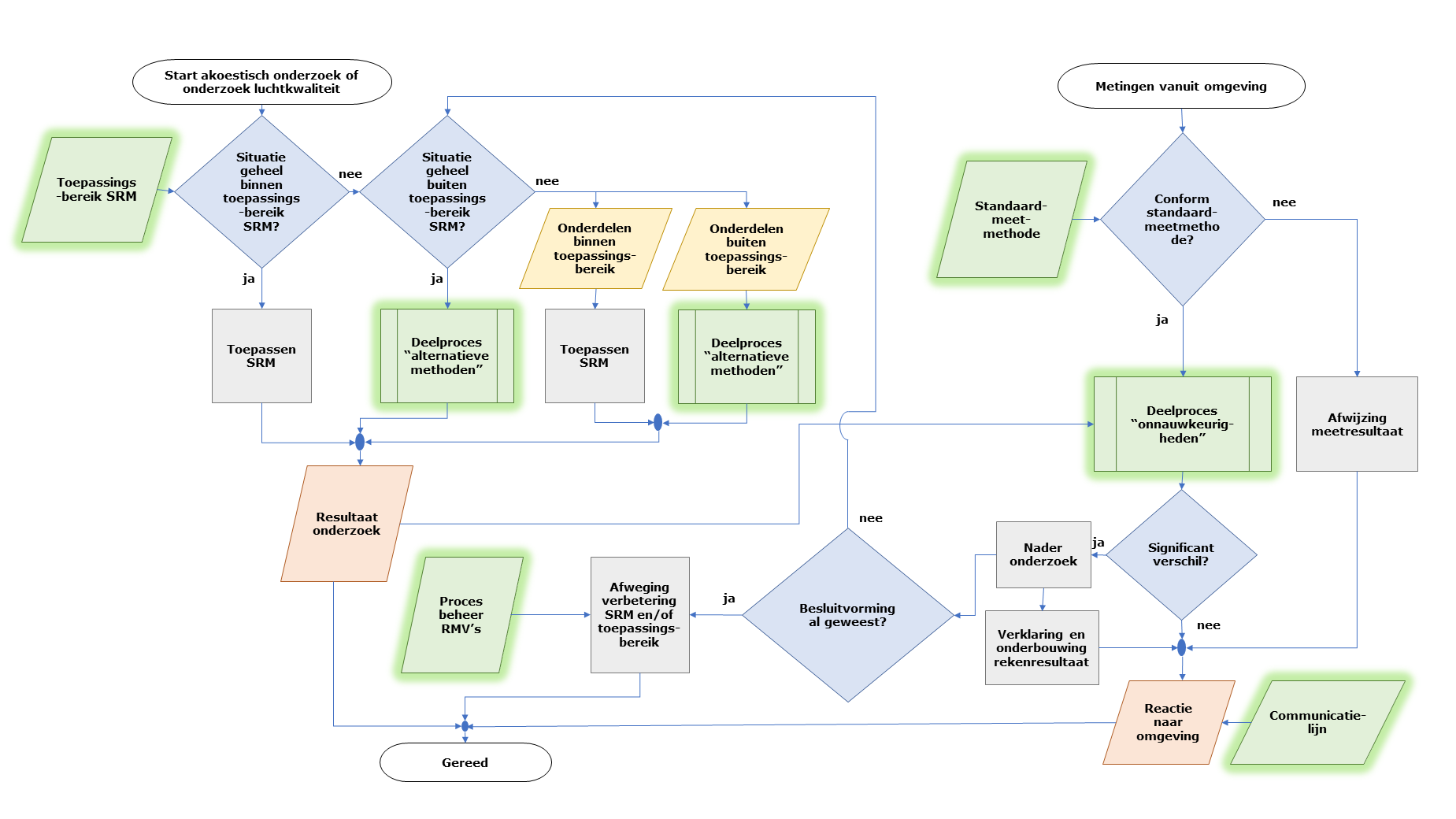
Measuring, modelling and experience
Noise and air quality are tested and assessed using calculation models. Why aren’t measurements used? How can measurements and models complement each other to form an assessment that best matches the perception and experience in the environment itself? RIVM and M+P wrote a report about it, which describes what a good and conscious division of roles between the measurement and calculation method looks like. The report forms the basis for the policy that was previously drawn up by the Ministry of Infrastructure and Water Management. The report was recently published on the RIVM website.
Calculation models or measurements?
In the Netherlands, noise nuisance and air quality are monitored using calculation models. Based on a stylised representation of the noise sources, the surroundings and the buildings, the noise levels and concentrations are calculated with computer software. There is no two ways about it: in order to test whether a construction or reconstruction project fits within the standards, the future situation must be assessed. And measuring the levels in a situation that has yet to be completed is simply not possible.
However, there is a degree of mistrust in calculation models. And that is partly justified, because a model is always a simplification of the real situation, with assumptions and approaches. And “measuring is knowing”: the result of a measurement is objective and feels closer to reality. When a loud motorcycle drives past, the noise meter matches our experience.
It is also partly unjustified, because the models themselves are also based on measurements. The vehicle emissions used for the calculations are measured. The meteorological influence is determined on the basis of measured technical research. And for specific situations, such as the noise generated by steel railway bridges, the result of a measurement is “plugged” directly into the calculation model.
Best of both worlds
With the development of technology, it has become easier to carry out (or to have) good quality measurements. The calculation models and computer software are also getting better and better, which means fewer approximations are required. Measuring and modelling are getting closer and closer all the time. A confrontation between calculation and measurement results is increasingly common. This can generate a lot of discussion, but also offers opportunities. How do we develop a system that combines the best of both worlds?
In consultation with the Ministry of Infrastructure and Water Management, ProRail and Rijkswaterstaat, RIVM and M+P have devised a system in which measurements can supplement the practice of calculation models. We also thought about how to deal with the situation in which measurements and calculations give a different outcome to the same situation: when do the measurements give cause to doubt the model results?
Further developments are required
This system is explained in the RIVM letter report drawn up in the context of the Models Improvement Programme of the then Ministry of Infrastructure and the Environment. The report also states that a number of elements for this are still missing. This is especially the case for noise; however, a number of these issues are already in order for air quality.
- The calculation models must be managed and maintained. A concrete example is the regular updating of the emission figures.
- The scope of the calculation models is not always clear. For which situations are the standard calculation methods suitable and for which not?
- If the standard calculation method is not suitable for a situation, what alternative method can be applied? Measurements can provide a solution in such a case, but other solutions are also conceivable. A process is required in which experts can assess and approve an alternative method and in which the acquired knowledge is made available.
- Sometimes a measurement is taken to check a modelled situation. A standard measurement method must be described so that a judgement can be made about whether such a measurement has been performed properly.
- Such a standard measurement method must contain an paragraph for tolerances so any uncertainty in the result can be determined. It can then become clear whether a difference of 1 dB is now a reason to doubt the model, or whether it is actually a confirmation of its correctness.
- Communication about measurement and calculation must be improved so that questions from the environment about the role and suitability of calculation models and measurements are answered clearly and unambiguously. This can prevent incorrect expectations of models and measurements from leading to frustration and discussion.
In the enclosed flowchart, the complete system is summarised, with the elements still to be developed shown in green. The framework is now available. The details of this will have to be taken up by the aforementioned government parties in the near future; the first steps have been taken.
